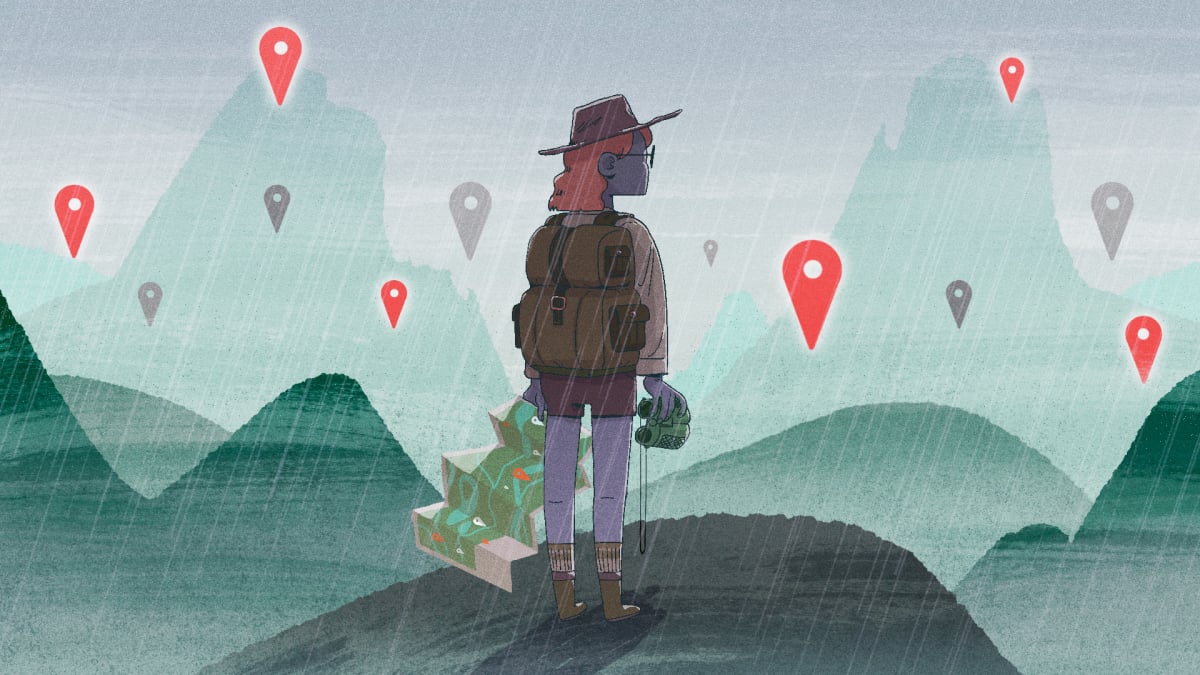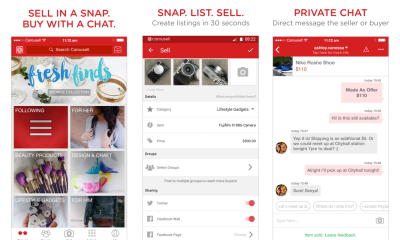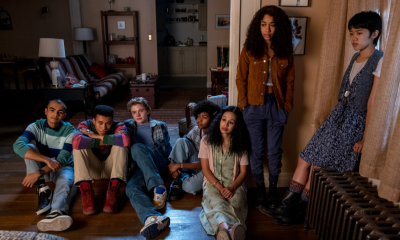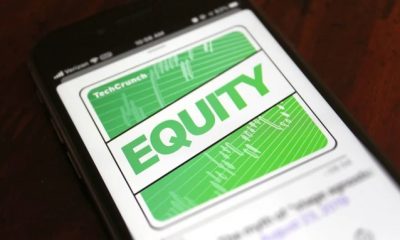Entertainment
When do you stop sharing your location with someone?

Hailey Todhunter is walking me through all of the people she shares her location with on Apple’s Find My. Before counting her mutuals, she guesses she has around 30 people on Find My. At the end of the tedious process, the 23-year-old marketing specialist from New York City realizes she actually has 97 people following her location, a discovery she finds “really scary.”
“There’s a lot of them that probably should not have my location, but the one that sticks out is the phone number I don’t even have saved as a contact,” she tells Mashable.
Todhunter is one of many young people who grew up sharing their location with friends. As she moved through different stages of life, she exchanged locations with those she was closest to, mostly for safety reasons. For high school and college students, Find My is a tool that helps streamline making plans with friends. And keeping someone on Find My is a low-effort way to keep in touch and maintain a sense of closeness. With the holidays approaching, many young people will rely on Find My to determine which of their friends are around to hang out with in their hometowns.
Find My, originally Find My Friends, launched in 2011 for iOS devices. Since its launch, the feature has become a staple of Gen Z relationships, despite lingering privacy concerns. In 2021, the feature was combined with Find My iPhone into a singular app. It was predated by Dodgeball, a social media service founded in 2000 that gave users the ability to text their location to the service in order to receive a list of registered friends nearby. Dodgeball was bought by Google in 2005 and later integrated into Google Latitude in 2013 and Google Maps in 2017. Location-sharing became even more entwined with social media in 2017 when Snapchat launched Snap Maps, which allowed Snapchat users to share their location with all of their friends, select friends, or no one. Gen Z fave BeReal also has the option to post your precise location to your friends or publicly on the app.
Location-sharing is a fixture of digital intimacy, much like finstas and close-friends Stories on Instagram. Rather than giving another person access to your unfiltered thoughts, however, you’re allowing them access to your every move.
And this can be useful in making plans to hang out or to monitor when your friends arrive home safely. A survey conducted by ADT in 2020 found that, on average, respondents reported sharing their location with approximately four people, and those people are mostly significant others, friends, parents, and siblings. It also found that 41 percent of women felt safer after sharing their location.
But what happens when your Find My is full of people you were once close to? “It starts out with someone just going, ‘Oh, we’re both going to be at the same event, here’s my location.’ Then, you never bother to un-add them from those circles,” Francesca Hodges, a 22-year-old communications coordinator in San Francisco, tells Mashable.
When you share your location with someone, you have the option to share it for one hour, 24 hours, or indefinitely. That spur-of-the-moment decision to share your location indefinitely with someone out of practicality could lead to having someone’s location for years. Hodges still has a friend from a study abroad program on Find My. She doesn’t even know their last name.
It starts out with someone just going, ‘Oh, we’re both going to be at the same event, here’s my location.’ Then, you never bother to un-add them from those circles.
With people like Hodges’ friend and the unsaved number haunting Todhunter’s Find My maps, it’s important to determine when it’s appropriate to stop sharing your location with someone. Some draw strict boundaries. For others, the app design makes them hesitant to remove their friends no matter how far they’ve drifted apart. “It’s either a falling out, previous girlfriends, or people that I don’t talk to as much,” Cole Parker, a 21-year-old student at Cal Poly San Luis Obispo, tells Mashable. “But it’s generally like I don’t really want you to know where I am at all times. You don’t really need to know this information.”
If you break up with your partner, removing them from Find My is an obvious decision, but for friends that come in and out of your life it’s less cut and dry, especially when Find My is a tool young people use to enable seeing their friends.
Sinead Swayne, a 22-year-old student at Cal Poly San Luis Obispo, has 100 contacts on Find My, the maximum number of people the feature can support. “From hitting the maximum number [of people on Find My], I’ll go back through and remove somebody who is not close to me. It’s nothing personal,” Swayne tells Mashable. “[Sharing my location] is something natural. If I share my location with you, it’s because I think it will help facilitate something and basically everybody who I have on Find My Friends has shared their location back with me.”
If you remove someone from Find My, you not only stop sharing your location with them, but they stop sharing their location with you. While the other person doesn’t receive a notification when you remove them, a line does come up in your texts that reads, “You stopped sharing location with X person” or “X person stopped sharing location.” Parker doesn’t mind that aspect. “If I’m not texting this person on a daily basis, and if I don’t want your location, you probably don’t want mine,” he explains. “It’s a mutual ghosting, essentially.”
“I delete people from Find My Friends pretty much just when I’m not close friends with them anymore,” Emily Clarke, a 22-year-old teaching assistant in Spain, tells Mashable. “I’ve kept people on the app for longer than I would’ve thought was ideal just to avoid drama, but most of the time I’ll take people off the next time I notice they’re on it and I’m not as close with them anymore.”
Even Todhunter draws the line somewhere with her 97 mutuals. She removed a friend she had a falling out with in college. “For me it was like, I need to move on from this, and it’s weird that this person that hurt me can see where I am at all times,” she shares.
As strange as it may seem that Todhunter and Swayne have so many people on Find My, it’s an established part of the social media landscape and a convenient tool for making plans. “I’m an extrovert with a lot of friends, so I like the efficiency of Find My Friends and not having to text people for them to respond, ‘Oh, I’m working,'” said Swayne.
It’s also a way for young women to feel safe and look out for their friends. Clarke only actively checks Find My when she goes out with friends or when her roommate is on a date with someone new. Most of the people Todhunter shares her location with are women from college because she felt safer with her friends knowing where she was — and knowing where her friends were.
For some, like 23-year-old Zade Kaylani, Find My is just another social media platform. “I check it in the same way that I check other apps,” the UX designer says. “I find it entertaining. I like seeing where everyone is, who is closest to me, and which two friends that don’t know each other are like right next to each other.”
Hodges feels similarly. “At times, for me and for a lot of my friends, we’ve turned it into another form of social media. And it produces this Sims-like world – even though it’s the world that we’re living in – of seeing all these little characters floating around on your screen, in one built environment, which is really funny. I don’t think about it as surveillance. That’s the thing,” explains Hodges.
“I have a lot of people [on Find My], and would I say all those people are my close friends? Absolutely not. And they would say the same thing about me.”
-

 Entertainment3 days ago
Entertainment3 days agoChatGPT from OpenAI is a huge step toward a usable answer engine. Unfortunately its answers are horrible.
-

 Business2 days ago
Business2 days agoWhen a startup’s founders are pretty much its board
-

 Entertainment6 days ago
Entertainment6 days agoStress-relieving gifts for people who need to chill out
-

 Business5 days ago
Business5 days agoTesla reveals long-awaited Semi Truck and begins first deliveries
-

 Business3 days ago
Business3 days agoTech’s growth story shifted this year. How has that impacted transparency?
-

 Business4 days ago
Business4 days agoSingapore-based e-commerce platform Carousell lays off 10% of staff
-

 Entertainment5 days ago
Entertainment5 days agoThe greatest Black Friday TV deals at Walmart, including a 65-inch QLED display for under $400
-

 Entertainment4 days ago
Entertainment4 days agoHere’s what would have happened in ‘The Midnight Club’s Season 2


























